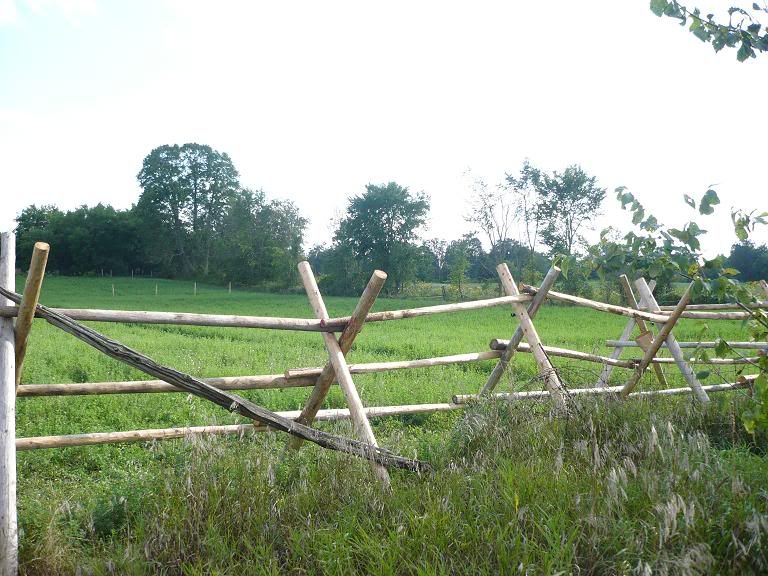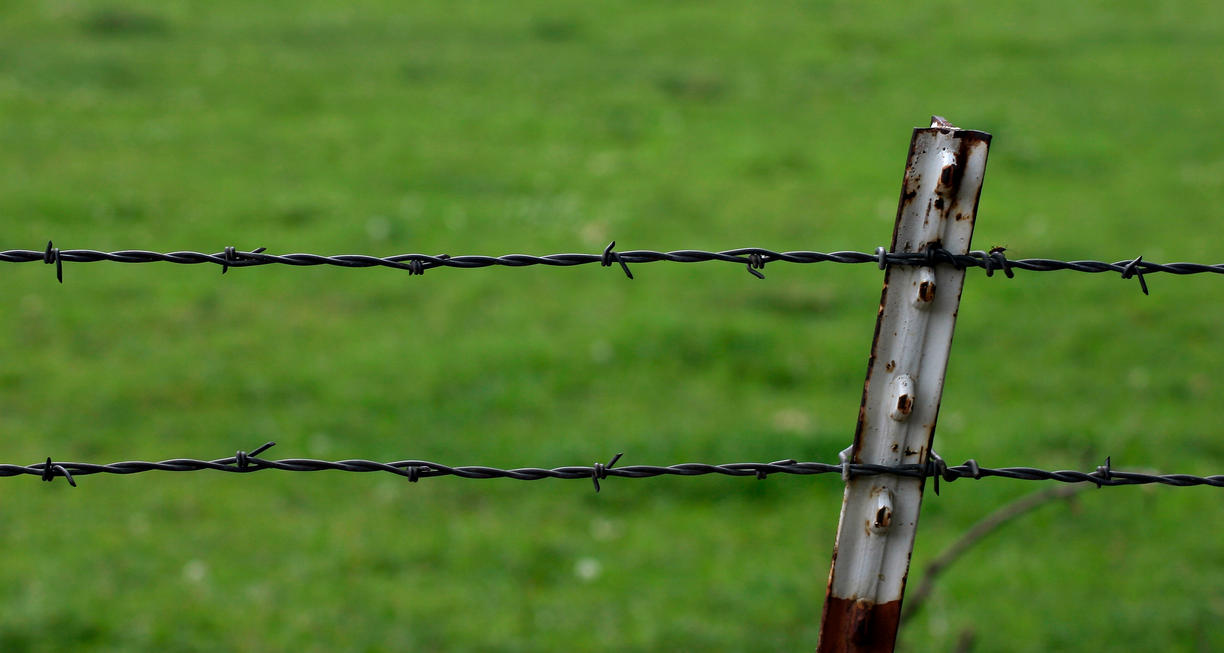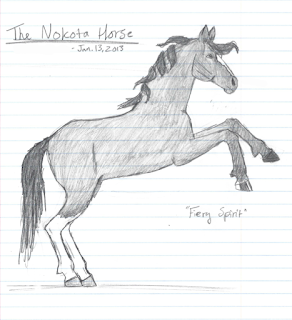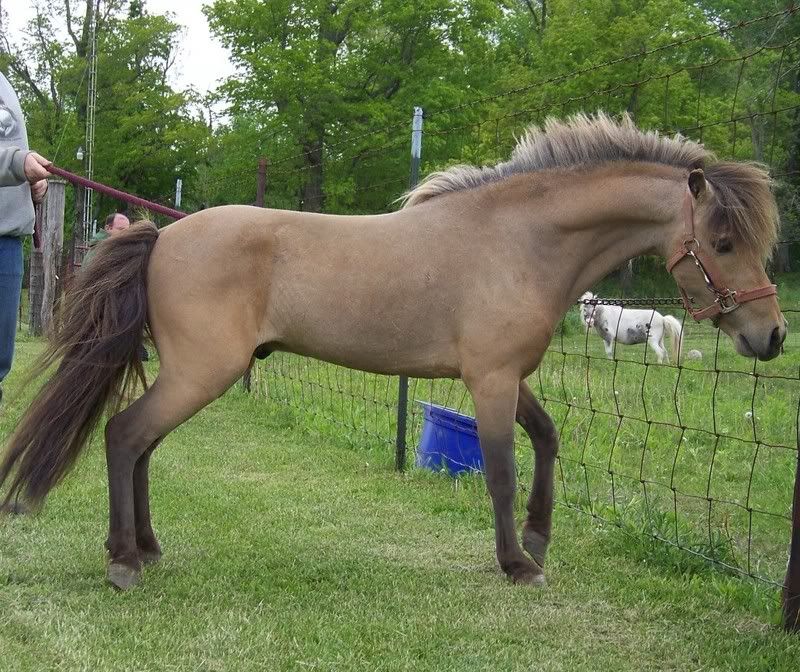Did you know that horses like listening to country music? Neither had I!
Last month I found an interesting article about horses and what genre of music they most prefer. Even more interesting, horses' taste of music aligns with mine: country. Isn't that awesome?
Note: Throughout this article when I refer to "country", I'm referring to the Hank Williams Jr. kind of music.
The studies were performed by Clare Carter, a student of Hartpury College in Gloucester, and Linda Greening, her supervisor. They used eight Thoroughbred geldings being stabled for three hours, and each genre (country, classical, jazz, and rock) of music was played for 30 minutes. Meanwhile, the researchers noted detailed data about the horses. They recorded 120 observed behavior and body language per horse per music genre.
The horses showed the same levels of calmness and alertness with the country and classical music as with no music. However, there was a slight difference between the affects of the country versus the classical: The horses ate much more quietly while listening to the country.
Rock or jazz music, on the other hand? No. Especially not jazz; the horses hated this. They displayed nervous and stressed body language, frequently snorting, stomping, tossing their heads, and neighing. None of these attitudes were shown when classical or country music was playing.
Rock and jazz music also affected their eating, and as Carter stated, they were "snatching at food in short bursts."
Overall, rock and jazz had detrimental affects on the horses, whereas classical and (especially) country music had beneficial affects.
So, head out to your barn, dust off the stereo, and find the country station.
Saturday, January 26, 2013
Friday, January 25, 2013
The Risky Frame Overo Allele
For more information on this, check out this and this. Thanks!
Frame overo in a heterozygous form is a beautiful white pattern, but in its homozygous form (known as LWS or the like) it will kill any foal within 72 hours (give or take) of birth. The exact genetic reasoning why is confusing (however, if you're interested, see this), so I'll skip the how and why.*Ahem* Just so you know, OO is genetic shorthand for two copies of overo, oO/nO for heterozygous, and oo/nn for a non-carrier. */Ahem*
The normal (as in nO) frame over pattern has no health implications that come along with the allele, and is very beautiful. However, there's also another form of heterozygous, and this is the recessive form which you don't see at all. Sometimes the oO pattern can also be masked by other white patterns, such as tobiano (To). In cases such as this, it's especially tricky to figure out your horse's color, so I'd suggest having her or his color genetics tested.
 |
| The two mares on the right are frame overos, or oOs. |
 |
| A LWS foal sometime before euthanasia. (Image found on Equine Color's gallery, not sure who took it.) |
When two copies (aka OO) of the frame allele reside in a horse, the horse only lives up to a few days after birth. Somehow, the OO alleles are linked to a non-functioning colon, which will cause colic (and it is sad, but there's really nothing you can do about it). Generally once a LWS foal starts colicking, the owners will have him euthanized. Either that, or the foal dies a slow, very painful death. Your choice.
Prevention
How to prevent a LWS foal? The only safety in this case is prevention, and not taking chances. If you've got an overo mare - only breed her to a stud that has been tested and confirmed as a non-overo carrier. When you breed two overos together, you'll always have a 25% chance of an OO foal, and that's a bigger risk than you should take; even if you have a 50% chance of getting a spotted oO foal.
Identify a LWS Foal
This is actually really easy. All OO foals are white or almost-white colored, sometimes have patches of pigment, the skin on the non-pigmented areas is pink, the eyes are blue, and sometimes these foals are deaf.
As most horse colors are not born this color, it shouldn't be too confusing. However, sometimes Dominant White foals crop up outta nowheresville, and they are about the same color as an OO foal. Also similar are the double-cream dilutes, such as a cremello or perlino.
Anyway, the best thing to do if you aren't sure is have the foal tested before talking to the vet about euthanasia, so long as the foal isn't in a fatal bout of colicking. It's only $25 as of now, so would you rather pay that, or accidentally put down an awesome foal? Yeah, I thought so.
Anyway, if you have any overos, or know anyone who does, please make sure they know the risks involved in breeding the lovely creatures. Thanks, and God bless!
Tuesday, January 22, 2013
Angel Eyes, Nolia, and More Big Horses
Last Saturday (the 19th), I finally got around to working with Angel Eyes. It had been about a month since the previous time I played with her, so even though she wasn't cooped up in a stall, she did have a lot of pent up energy.
She didn't seem to be forgetting her cues (or even pretending to not know her cues), which was great. I just wish she wasn't so fat. XD I know that part of it is because she's fuzzed up and is maturing, but I still feel kinda bad for not exercising her more.
Anyway, I'll just tell my story of visiting the stables with the camera using some pictures I took.
 |
| Nolia (ee/Cr/To) and Spirit (A-/Cr) come to greet me. |
 |
| Spirit's eye. |
 |
| Nolia's eye. |
 |
| Sparky! Such a sweet boy. |
 |
| Angel Eyes really is quite fat. |
 |
| Toy looks and me while Angel just stands looking at me. What are you doing? Can't we go? |
 |
| If you won't move the brush, I'll move my face. |
 |
| Such a tame girl (most of the time) - her knee is just resting on my knee. |
 |
| Silly, trying to mess with my falling-apart knot. |
 |
| Note how fuzzy her head is, and kitty Thomas in the background. |
 |
| So happy to be running! |
 |
| Sparky and Angel say hi. :) |
 |
| Yep, Angel got Sparky excited as well. |
 |
| Jump! |
 |
| Finally starting to emotionally cool down. |
 |
| Cool hooves! |
Friday, January 18, 2013
Fencing for Horses - Which Should You Choose?
There are many options to choose from, and sometimes it gets confusing to choose the "right" type for the usage! Thus, I shall skim over the different types of fencing and the pros and cons of each. Remember that when choosing fencing, price is not the only factor; there also is safety, maintenance (how much spare time do you really have?), and terrain-type to consider.
Pros
Pros
Pros
Pros
Buck (or Split Rail) Fencing
 |
| Buck fencing is ideal for rocky or treacherous terrain, as it simply rests upon the grounds surface and does not require postholes. |
Pros
- Works great over rocky or uneven terrain.
- Rustic-looking.
- Is portable if built lightweight enough.
Cons
- Will require some maintenance as it is only wood.
- Can invite your horse to chew and/or crib.
Steel Pipe and Rod Fencing
 |
| Simple, strong, and manageable. |
- Very strong.
- Safe.
- Works great for pens and runs.
- Very little maintenance required.
Cons
- Posts must be set in concrete.
- Very little flexibility.
- Strict and business-like appearance.
Electric Fencing
 |
| Electric fencing works great in most cases. |
- Safe.
- Teaches horse to respect fencing. (Unless the horse knows how to sneak through it).
- Inexpensive.
- Quick to set up.
Cons
- Insulators and controls require maintenance.
- Some horses may already know (or learn) how to run through electric fences. If you have a horse that does this, electric fencing is not a good choice!
PVC Fencing
 |
| Don't buy PVC fencing unless your horses don't act like horses. |
Pros
- Has a clean, "fancy" look.
- Has decent visibility.
Cons
- Expensive.
- Flimsy.
- Horses won't always respect it (unless very well trained).
- You know what's interesting? Companies that sell PVC fencing for horses suggest setting up electric fencing beside it. They have a point!
Vinyl-Coated Wood Fencing
 |
| Vinyl-coated wood fence; very similar to polyethylene or PVC coated wood fencing. |
Pros
- Very low maintenance.
- Nice looking.
- Good visibility.
- Not as flimsy as other plastic fences.
- Deters chewing.
Cons
- Seems to be very expensive.
Continuous Fencing
 |
| Continuous fencing is overall pretty awesome. |
Pros
- Low maintenance.
- Safe.
- Decently priced.
Cons
- Not very visible.
Smooth Wire Fencing
 |
| Smooth wire fencing is country-looking and safe. |
Pros
- Economical.
- Less likely to cause lacerations than barbed wire.
- Won't sag due to snow build-up.
Cons
- Horses may start leaning against it.
- Requires maintenance.
Barbed Wire Fencing
Pros- Sometimes provides a slight mental barrier.
Cons
- Can seriously rip up an animal's skin, leading to possible infection.
- Barbed wire was designed for cows, not horses. That itself should say something about its safety for horses.
- A lot of maintenance required.
Field Fencing
 |
| Stay as far away from this type of fencing as possible. |
Pros
- ...None?
Cons
- Can be very dangerous to horses- both big and small. Within a year, I learned that our horse had died from this fencing, and I also saw a deer that had to be shot because of this type of fencing. Please, please do not use this. There are many safer options out there.
Tuesday, January 15, 2013
Back to Drawing
For the first time in months, I've been able to get myself back to drawing horses. The drawing below had previously been a bunch of scrambled shapes and lines - hardly even resembling that of a horse - so I had given up on it. The other night I was bored, found it in my notebook, and started fixing stuff.
It isn't the best I could do if I'd given him more time, but I'm happy with him. The thing I should've done better was his head (should be smaller, and not so fake-y), but I think his tail makes up for it. And, even though I don't usually use so much freestyle expression-ism, it is a lot better than it used to be. (:
Introducing, Fiery Spirit, the Nokota!
If you wanna know his genotype, he is an ee/Dn/Sb1. Figure it out, and then comment if you have a guess as to his phenotype.
God bless to y'all, have a great day!
P.S. - I'm still looking for subscribers, as well as possible writers that have expertise on varying equine topics. :) If you think you could fill either of these spots, please leave a comment.
It isn't the best I could do if I'd given him more time, but I'm happy with him. The thing I should've done better was his head (should be smaller, and not so fake-y), but I think his tail makes up for it. And, even though I don't usually use so much freestyle expression-ism, it is a lot better than it used to be. (:
Introducing, Fiery Spirit, the Nokota!
If you wanna know his genotype, he is an ee/Dn/Sb1. Figure it out, and then comment if you have a guess as to his phenotype.
God bless to y'all, have a great day!
P.S. - I'm still looking for subscribers, as well as possible writers that have expertise on varying equine topics. :) If you think you could fill either of these spots, please leave a comment.
Saturday, January 12, 2013
Unknown Mysteries of Equine Genetics - Silver (Z) and Cream (Cr)
Think we're very far along in knowing all about horse genetics? Nay (or neigh?), we actually aren't. There is so much more to know about genetics and how they function that even after a lifetime of studying, I doubt one would know everything. God definitely has made the equine - along with all other animals - a complex, gorgeous structure of living, feeling, mass. They even can have personalities!
This time I'll be writing some more about the Silver (Z) gene, and a theory pertaining to it and the Cream (Cr) gene. I'm apt to call it simply a hypothesis, but genetic testing would say otherwise. So, it is a theory.
The theory is that the Cream (Cr) gene can carry and inhibit the phenotype of the Silver (Z) gene.
Where did I hear of this? It actually wasn't in Sponenberg's latest book on equine genetics, so it must be a pretty recent thing; or, perhaps, just rarely heard of. Either way, I was browsing through a horse forum and saw this gorgeous buckskin in an icon off to the side. Of course, being me, I had just had to click on this stud's picture:
Taking advantage of the link to the lucky breeding stable that owns this stud, I read some about him and learned that he throws Silver foals! In case you want to read some more about him, or want to view images of him, I'll link you to Willow Bend Farm's page about Golden.
Now get this: Proven from scientific studies, the Silver gene will *always* dilute black on a horse that is Z-positive. Which, as you can tell, creates a problem, as Gold has very, very black points.
Something that I found interesting, though, was that up until he was about three or four years of age, his mane had silver in it. And as a six-week old foal, he appeared to be a chestnut! I'm not sure if this is normal or not for buckskins, but if you're curious- just check out that link. :)
If this hypothesis is proven, we shall know a bit more about horse genetics. However, Silver will still show on most Cream-based dilutes. Here are two silver buckskins for ya.
And, that'll be all folks! I'd love to receive some feedback on this, whether it be comments, suggestions for blog posts, or questions, so think it over. :)
This time I'll be writing some more about the Silver (Z) gene, and a theory pertaining to it and the Cream (Cr) gene. I'm apt to call it simply a hypothesis, but genetic testing would say otherwise. So, it is a theory.
The theory is that the Cream (Cr) gene can carry and inhibit the phenotype of the Silver (Z) gene.
Where did I hear of this? It actually wasn't in Sponenberg's latest book on equine genetics, so it must be a pretty recent thing; or, perhaps, just rarely heard of. Either way, I was browsing through a horse forum and saw this gorgeous buckskin in an icon off to the side. Of course, being me, I had just had to click on this stud's picture:
Taking advantage of the link to the lucky breeding stable that owns this stud, I read some about him and learned that he throws Silver foals! In case you want to read some more about him, or want to view images of him, I'll link you to Willow Bend Farm's page about Golden.
Now get this: Proven from scientific studies, the Silver gene will *always* dilute black on a horse that is Z-positive. Which, as you can tell, creates a problem, as Gold has very, very black points.
Something that I found interesting, though, was that up until he was about three or four years of age, his mane had silver in it. And as a six-week old foal, he appeared to be a chestnut! I'm not sure if this is normal or not for buckskins, but if you're curious- just check out that link. :)
If this hypothesis is proven, we shall know a bit more about horse genetics. However, Silver will still show on most Cream-based dilutes. Here are two silver buckskins for ya.
Tuesday, January 1, 2013
Genetic Alleles
Many times you may hear the word "allele", but not really know what it means. Fortunately, it's actually fairly easy to understand.
An allele is one of two (or sometimes more) variants of a gene, causing different traits to occur.
When there are only two possible allele options in a gene (or locus- a group of genes), it's generally easiest to think of the gene as a switch. If the switch is "off", the trait-producing allele is nonactive, and replaced by the non-trait producing allele. If the switch is "on", the trait-producing allele is either dominating or in homozygous form (sometimes both).
Sometimes there are more than two options for alleles at a specific gene, though. At this point, it's easiest to think of it as a three-(or more)-way switch.
Alleles are either homozygous or heterozygous, and recessive or dominant.
First of all, the normal-sized letters are the shorthand abbreviations for the name of the gene. The superscript ones are the abbreviations of the alleles. Now, note how the first letter of some of the alleles are capitalized, and some aren't?
If the first letter of the allele is capitalized, the allele is dominant. If the first letter is in small caps, the allele is recessive.
And, it's that easy. ;) Ask if you have any questions!
An allele is one of two (or sometimes more) variants of a gene, causing different traits to occur.
When there are only two possible allele options in a gene (or locus- a group of genes), it's generally easiest to think of the gene as a switch. If the switch is "off", the trait-producing allele is nonactive, and replaced by the non-trait producing allele. If the switch is "on", the trait-producing allele is either dominating or in homozygous form (sometimes both).
Sometimes there are more than two options for alleles at a specific gene, though. At this point, it's easiest to think of it as a three-(or more)-way switch.
Alleles are either homozygous or heterozygous, and recessive or dominant.
- Homozygous: The horse has two copies of this allele, and will always pass on one of the copies to its offspring.
- Heterozygous: The horse has one copy of the allele, and will pass on the allele to its offspring about 50% of the time. Sometimes you won't be able to tell by looking at the horse if he is heterozygous for a recessive allele.
- Recessive: A recessive allele is one that the horse must be homozygous for in order for the trait to show in the coat color (or phenotype). If a horse only has one copy of a recessive allele, it will not show in the phenotype.
- Dominant: Dominant alleles are really great, because if a horse has just one copy of them, you'll be able to tell. However, dominant alleles can sometimes mask a recessive allele.
- An example of this would be a Bay horse carrying one copy of the Extension allele. Because the Extension (e) allele is recessive, the dominant Bay (A-) allele would take control, and the horse would be bay.
Also, there's one awesome way to tell if an allele is dominant or recessive in genetic shorthand. As an example, genetic shorthand for a Linebacked Palomino would look like this:
EeEe/CCr/DnDn
First of all, the normal-sized letters are the shorthand abbreviations for the name of the gene. The superscript ones are the abbreviations of the alleles. Now, note how the first letter of some of the alleles are capitalized, and some aren't?
If the first letter of the allele is capitalized, the allele is dominant. If the first letter is in small caps, the allele is recessive.
And, it's that easy. ;) Ask if you have any questions!
Subscribe to:
Posts (Atom)




